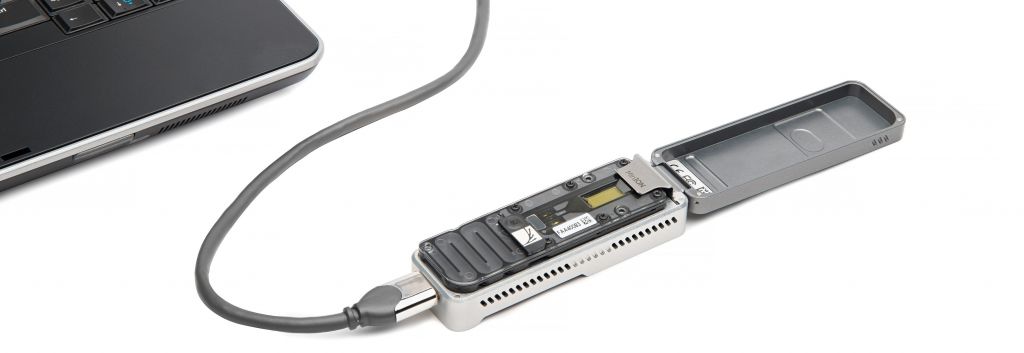Update (30/01/2018): Oxford Nanopore has published a study in Nature Biotechnology outlining the first use of its pocket MinION device to sequence a human genome. The device was able to read sequences of DNA that are “hundreds of times larger than usual,” helping scientists better reconstruct the whole genome sequence.
MinION costs less than $1,000 and offers high-speed sequencing even outside of the lab, with an accuracy of up to 99.96% when using ‘nanopolish’ software to correct any errors made during sequencing.
Originally published on 02/12/2016
Scientists have used Oxford Nanopore’s technology to sequence a whole human genome for the first time ever. The small portable device is challenging the technology of big players like Illumina.
Oxford Nanopore is one of the only 3 biotech unicorns in Europe. Its MinION device, the size of a Mars bar that connects to your laptop via USB, was just used to sequence the whole genome of a human sample for the first time. The sequencing was carried out by the Wellcome Trust Centre for Human Genetics and Genomics plc using multiple MinION devices.
This feat marks an inflection point in both the technology and economy behind DNA sequencing. Currently, Illumina‘s bulky and expensive equipment dominates 75% of the €4B next-generation sequencing (NGS) market, which is expected to triple by 2021.
Oxford Nanopore is challenging all competitors with a portable device that can provide longer reads of up to 300kb with high accuracy and costs less than €1,000 plus consumables. Until now, one of its disadvantages was its limitation to smaller-sized DNA sequences, but this announcement finally puts the MinION up to level with the biggest NGS players.

As its name hints, Oxford Nanopore uses protein nanopores to sequence DNA in real time. The changes in current triggered as DNA passes through the nanopore are used to identify the bases one by one.
This is the first time nanopore technology has been used to sequence a whole human genome, setting the basis for a new era in NGS. However, Oxford Nanopore will have to fight with the big players Illumina Thermo Fisher, Pacific Biosciences and Qiagen. In particular, Illumina is not trying to make it easy for the new competitor: earlier this year, it sued Oxford Nanopore claiming that its nanopores are protected by two Illumina’s patents, which was settled this summer.
In any case, the technology developed at Oxford Nanopore could make a big difference in patient care, speeding up the time required for routine testing or facilitating field tests after an outbreak. The company is not stopping here and is already developing two other sequencers: PromethION for high-throughput desktop use and SmidgION, even smaller than the MinION, designed to be used with a smartphone.
All images from Oxford Nanopore





